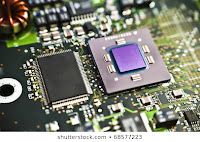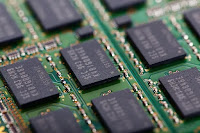Block Diagram of Computer
Input Unit :-
This unit contains devices with the help of which user enter data into computer. This unit makes link between user and computer. The data read from the computer
device is stored in the computer’s memory .They are used for accepting thedata on which the
operation are to be performed the most commonly
used input devices among other are;
a) Keyboards
b) Mouse
c) Scanner
d)Digital camera
e) Joy sticks
Computer peripherals are any computer components that expand system functionality and
are not necessary for basic operation ( not the part
of CPU).
CPU (Central Processing Unit)
ALU(Arithmetic Logic Unit):-
The ALU performs
arithmetic and logical operations .the arithmetic
operations
include addition, subtraction, multiplication and division. Numerical data in the
form of integers are supported by all the computers.
Some computers also support floating point
numbers. Logical operations always include the Boolean
functions such as AND, OR and NOT. These
operations used during conditional branching.
Control Unit (CU):-
A computer control unit is a part of the computer
processor. The control unit fetches
internal instructions of programs from the main memory to the processor the
control unit coordinates the activities of the various
component of the computer. The arithmetic logic unit
and the control unit together comprise the Central
Processing Unit (CPU)
Control unit controls flow of data:
a. From input device to memory
b. From memory to output device or secondary storage
c. From secondary storage to memory
d. From ALU to memory
e. From memory to ALU
Memory Unit:-
The information(instruction and data) requirement is
stored in memory . The computer’s memory is constructed out of semi-conductor material and
stores information in binary form. The memory is
organized into equal sized units(usually collection of
8 bits, called a byte) these units are arranged in a
sequence and are identified by numbers called
addresses.
Output Unit:-
Just as input devices are used to give the data to computer, there should be some
means for the computer to communicate with the user. The data generated by the computer is displayed
using an output device. Examples of output devices
are Monitors, printer, card punch etc.
Classification of Computer Memory:-
• Registers:- Registers are location within the CPU where data
stored temporarily during processing. Registers(high speed )are used in arithmetic and logic operations
for holding data operands. Some registers can access by
the user through instructions. Others are reserved for the
use of the CPU to perform it’s activities.
• Cache Memory:- Cache memory is a very high speed memory
which speeds up the
CPU working. It acts as a buffer between CPU and a main memory. The regularly used data's
and program files which are used by CPU are stored in the
Cache memory. CPU can access the data when ever required. In the starting, Operating system starts it transfer some important
files and data from disk to cache memory which CPU
can access easily.
Primary Memory (Main Memory)
There are two kinds of primary Memory:-
RAM – Random Access Memory (this is used for storing
programs that are currently
working and data that is being processed)
Main Memory Stores info about applications that are open. VOLATILE –When you switch off the machine, all the data will
disappears!!!
ROM – Read Only Memory (its contents are PERMANENTLY
fixed into the memory chip
at the manufacturing stage. It is used –for example –to load the bootstrap loader (the program
that loads as soon as you start the computer)
Non-Volatile (does not change)
Programs that are necessary for the computer(machine) to run Boot up
program etc.
Secondary Memory
This memory is also known as external memory. It is
slower than main memory. It
is used for storing data and Information permanently on it. CPU(central processing unit) access
the data of secondary memory by some input-output
routines. Contents of secondary memories are first
transferred to main memory, and then CPU(central processing unit) can
access it. Example of secondary memory: DVD , disk,
CD-ROM(Read Only Memory) etc.
In above figure(MEMORY HIERARCHY DIAGRAM) various types of memory are shown in
the order of increasing size, decreasing speed and
decreasing cost.
The capacity and size of memory of a computer is
measured in terms of the number of bytes associated with
it. Each one of the digits 0 and 1 of the binary system is
called 1 bit.
The following units are used to measure storage capacity of the storage
unit..
1 Bit = Binary Digit (single 1 or 0)
4 Bit = Nibble
8 Bits = 1 Byte B
1024 Bytes = 1 Kilobyte KB
1024 Kilobytes = 1 Megabyte MB
1024 Megabytes = 1 Gigabyte GB
1024 Gigabytes = 1 Terabyte TB
1024 Terabytes = 1 Petabyte PB
1024 Petabytes = 1 Exabyte EB
1024 Exabytes = 1 Zettabyte ZB
1024 Zettabytes = 1 Yottabyte YB
1024 Yottabytes = 1 Brontobyte BB
1024 Brontobytes = 1 Geopbyte
|



















5 Comments
This is very helpful.
ReplyDeleteThank you for your appreciation
DeleteGood content . Keep it up 👍
ReplyDeleteYou have written all this very well ❤️👍bhai
ReplyDeleteThis is helpful for me
ReplyDeleteThank you
If you like my content then share it...